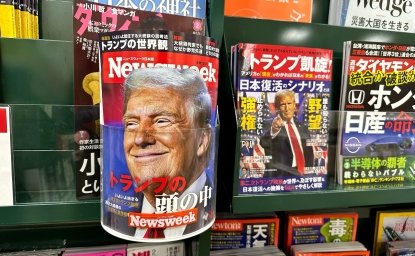Party Media Reform in China
A personal statement by Gang Lin, Asia Program associate, for a Congressional Executive Commission on China roundtable held on September 22, 2003.
A personal statement by Gang Lin, Asia Program associate, for a Congressional Executive Commission on China roundtable held on September 22, 2003.
By
Gang Lin
Woodrow Wilson International Center for Scholars
Personal Statement for Issues Roundtable
Freedom of the Press in China after SARS: Reform and Retrenchment
Hosted by the Congressional-Executive Commission on China
Room 2255, Rayburn House Office Building
One by-product of China’s economic reform is the growing commercialization of the Chinese media. According to official statistics, between 1978 and 2002, the number of newspapers in China increased from 186 to 2137, while the number of magazines increased from 930 to 9029. Most of these media are still owned by the Party-state, receiving more or less subsidy from the government. However, advertising and subscribing income has become the major source of revenues for the media, except for newspapers and magazines directly run by Party and government organs (dangzheng jiguang). Media commercialization has provided new incentives and opportunities for journalists to cover lively, sensational, provocative and diverse stories, and expose political corruption, even though it may offend government officials.
Amid media commercialization, Party-state organ newspapers and magazines continue to lose their readership. The circulation of the People’s Daily, the principal mouthpiece of the Chinese Communist Party, decreased significantly from 6.2 million in 1979 to about 2 million two decades later. To increase readership, many Party organ newspapers have to rely on their subordinating newspapers for financial support. Two-thirds of Party organ newspapers run by provincial Party committees have evening newspapers (wanbao) or metropolitan newspapers (dushibao). The Guangming Daily, a national newspaper run by the Party, targeting intellectuals, has benefited from its subordinating Life Times. Even the official New Chinese News Agency carries some sensational stories related to sex in its web site.
To increase readership, China’s new leadership under Hu Jintao has called for the Party’s media to be “close to the mass, close to the realities and close to life,” reducing the exposure of leaders’ activities in the media to give more coverage to ordinary people. Most recently, the Party plans to end its direct financial support to and mandatory subscription requirement of most Party-government newspapers and magazines. At the national level, only three newspapers and one magazine are the exceptions, including the People’s Daily, Guangming Daily, Economy Daily and Seeking Truth (Qiushi), which will still be run by the Party’s central leadership. At the provincial level, the central leadership will allow each Party committee to continue operating one newspaper and one journal. Each municipal Party committee will be allowed to operate only one newspaper, and county-level Party committees and government can no longer operate media publications.
Beijing’s reform plan on Party media is based on at least two considerations:
¨ Reducing the financial burden. In today’s China, each province can have as many as several dozen Party newspapers and magazines, starting from the provincial level down to the county level. These media are dull in content, relying heavily on subsidy and mandatory subscription by governments at the different levels. The lower the level of the government, the more Party newspapers and magazines are to be subscribed; thus creating heavy burden for the grassroots.
¨ Strengthening the Party media. To maintain too many Party newspapers and magazines not only increases government’s financial burden, but also makes Party media either more boring—repeating the same tune here and there—or inconsistent. By limiting number of Party newspapers and magazines, Beijing apparently tries to make a distinction between Party media and mass media, freeing the former of fiery market competition with the latter without loosening the Party’s guideline.
The relative retreat of Party newspapers and magazines from the media market follows Beijing’s strategy in economic reform of retaining large state-owned enterprises and privatizing smaller ones (zhuada fangxiao). The commercialization of mass media does not necessarily mean that the Chinese media will gradually gain political independence from the state control. For the foreseeable future, political taboo will co-exist with Beijing’s one-Party rule. Chinese journalists will have to be cautious in exposing the dark side of the society, because too much exposure of social problems will not only shake people’s faith in the performance of the Party-state, but also challenge the legitimacy of the political regime. In the absence of significant political reform, we should not expect media freedom in China as we understand the concept in the United States.

The Indo-Pacific Program promotes policy debate and intellectual discussions on US interests in the Asia-Pacific as well as political, economic, security, and social issues relating to the world’s most populous and economically dynamic region. Read more



